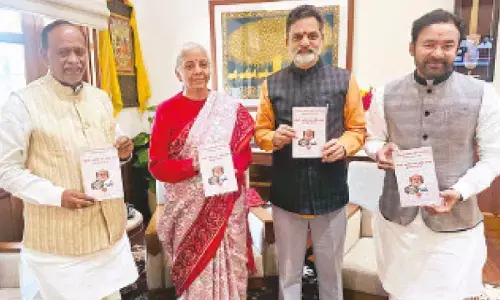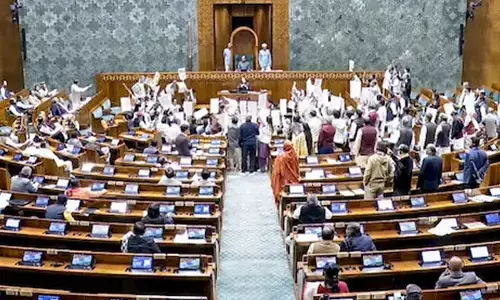Pre-Budget Expectations from Industry Experts of IT, Retail and Tech Sector

Pre-Budget Expectations from Industry Experts
Quotes from an interview with some of the Industry players on what they expect from the Government in their respective sectors from this 2022 budget.
IT and Tech Sector in 2022 should be incentivised to use more "Made in India" products. This will help the country to achieve the PMO's objective of achieving Atamnirbhar Bharat.
The budget should focus on a few important things for demand generation. Promote Make in India Initiatives and the government should fund a scheme for tech adoption, and government purchases of high-end IT products should be encouraged/prioritized to help create more demand. The government should fund a scheme for tech adoption, and government purchases of high-end IT products should be encouraged/prioritized to help create more demand.
Experts of Consumer Durables, Electronics, IT, Retail, and Tech Sector.
1. IT & Tech Industry
Mr. Sandeep Lodha, Co-founder at Netweb Technologies
Today, the government has quite a lot of proactive policies for server manufacturing, like PLI and other initiatives. Our take is that the budget should focus on a few important things for demand generation. We need to see how the local buying of made-in-India products is encouraged. The government should fund a scheme for tech adoption, and government purchases of high-end IT products should be encouraged/prioritized to help create more demand. Data Centre Operators should be incentivised to use more "Made in India" products. This will help the country to achieve the PMO's objective of achieving Atamnirbhar Bharat. Local server technology development will help to bring cutting-edge technology to the country while also addressing the nation's security concerns. Another thing I am looking forward to is the R&D side. There has to be a special incentive for companies investing in R&D, there must be government incentivised and facilitated collaborations between the companies and premium Education and R&D facilities. This will be a major game-changer as the R&D and education systems will become more aligned with the real world of commercially valid products, and the industry will benefit from innovation and local enhancement of the technology to create global competence.
2. Consumer Durables and Appliance Sector
Mr. Avneet Singh Marwah, CEO at SPPL, Exclusive Brand Licensee of Blaupunkt in India
As we are going through another wave, this is an indication of how important Atma Nirbhar Bharat is. To boost Indian manufacturing and MSMEs, we need a stable GST tax slab. No product should be above the 18% slab, and they must now encourage consumerism in order to improve market sentiment. By doing this, India could become the world's third-largest market for television. The market size could grow by 15% each year, reaching 16 million units. We urge the government to not change any customs duties for the time being, as the industry is moving towards stable conditions.
We need to congratulate GOI on introducing the $10 billion PLA scheme for display panels and semiconductor chips. We request FM to have timelines for these projects. s is a pathbreaking move for the electronics sector.
The other most important sector where the government needs to intervene to take strict measures and review how they are misleading is the cargo sector. We've seen a 10x increase in sea freight in the last few years, and along with that timeline, it's increased 2x. There is a big syndicate in this sector, which is causing this delay and causing a huge loss to the economy as these delays are being managed at Indian sea ports as well.
The government should consider a lower tax rate on consumer electronics; this will encourage consumers to buy higher ASP products. This will also help in digital India, as consumers will opt for more tech products.
3. Electronics Sector
Ms. Pallavi Singh, Vice President, Super Plastronics PVT LTD (SPPL), India brand licensee of Westinghouse TV
a) Promote Make in India Initiatives like Building Tech Hub or boost Semiconductor manufacturing or efforts to be put under National Policy on Electronics (NPE)
Given the current semiconductor shortage in the world, our government should aid the potential sector and afford schemes under the NPE. Those aiming to manufacture in India and contributing towards the growth of the economy can be provided aid in the form of subsidies. The NPE can also help in providing a shoulder for our country and reducing its dependence on foreign nations if it were to correctly subsidise those who are willing to bring the relevant infrastructure, especially with respect to semiconductor/chipset manufacturing, to India. This, ideally, should also be backed by tax subsiding schemes so as to reduce the burden on an entity since the quantum of investment required is huge. The NPE can also be expanded to include and aid those already manufacturing consumer electronics in India as opposed to importing them.
b) Slash GST prices on TV - With the budget of 2022-23, we hope and sincerely urge that the government reduce GST on all consumer electronics to reflect those available on raw materials to reduce the disparity, especially since in today's day and age, consumer electronics are tagged as necessities by all categories of consumers in India. With the current rate of 18% on televisions up to 32 inches only, there is a vast range of televisions that comes under the ambit of the 28% rate. A reduction in the rate to 18% even in televisions up to 43 inches will bring a huge relief since the majority of the consumers in India fall under the 32 to 43 range.
c) Reduction in Raw Material Prices or waiver of customs duty on imported inputs to make components.
Since there are no open cell manufacturers in India and the viability of setting up a plant is is far from certain, the Indian government should take this into consideration and reduce the customs duty on open cells to 0% from the current 5%. Had the same been present in India with imports providing competition or driving up open-cell prices, it would still be reasonable to levy this duty. With the absence of the product because of the sheer lack of a facility, Indian manufacturers of televisions should not be made to pay for it. This will help to promote domestic manufacturing while also keeping our prices competitive should we aim to become an exporting country for consumer electronics.
d) Expectations regarding the retail sector - With the pandemic causing a major hit to the retail sector, the government should introduce schemes and rebates to help rebuild this sector. GST on the same should also be curbed to provide relief and relaxation from the current inflated economy and increase in the price of raw materials. It has become a tedious task to run brick and mortar stores, and for those retailing particularly through them, even more so.

















